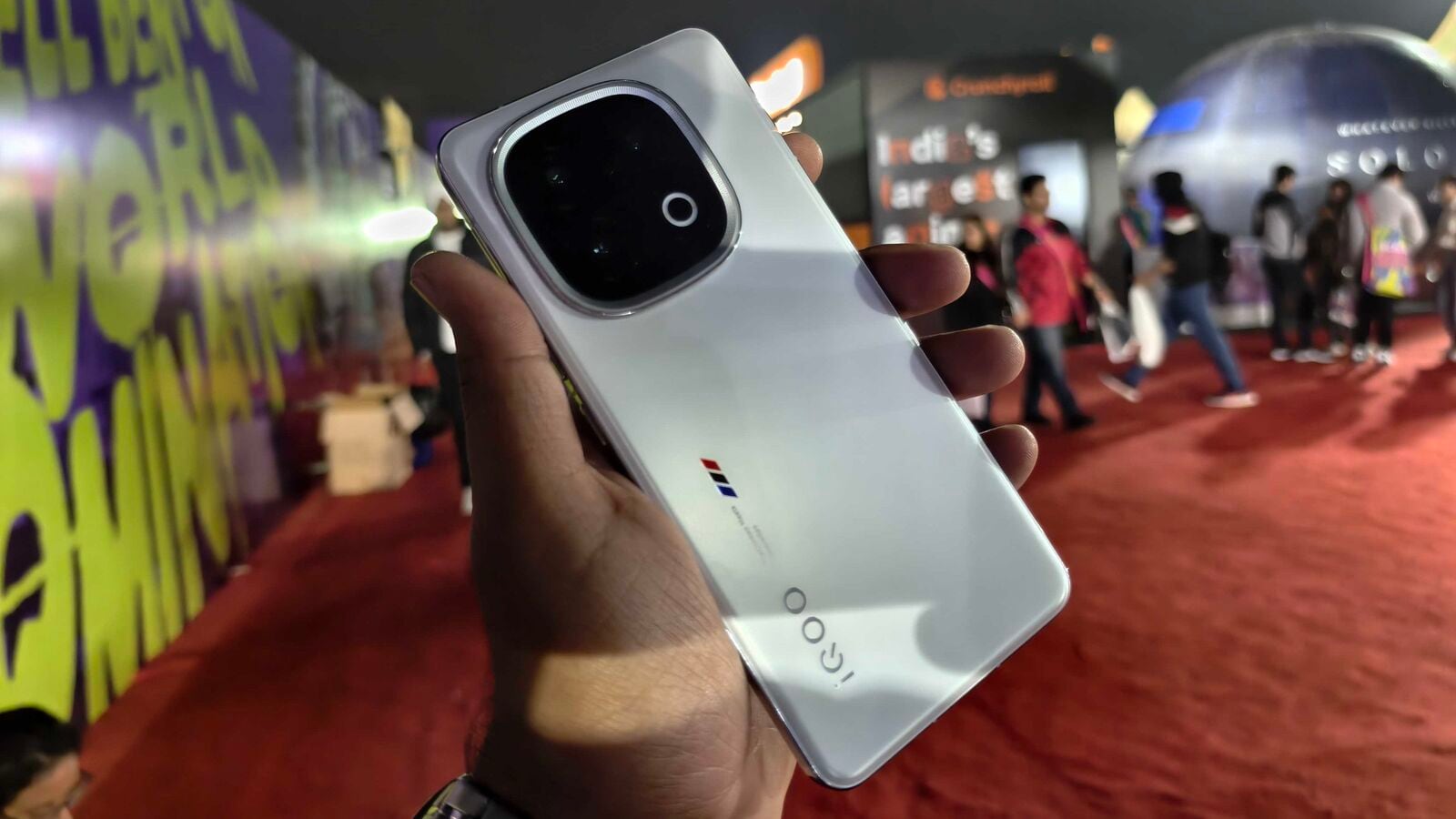[ad_1]
Over the years, iQOO has made a name for itself in the Indian market with its gaming-centric smartphones. However, in recent times, the company has also been vying to compete in the flagship space with its number series and the iQOO 13 is its latest attempt in this direction.
With the addition of an ultrasonic fingerprint sensor, improved water resistance ratings, a bigger battery and a much more powerful processor, iQOO has filled some much-needed gaps in its flagship range, while keeping essentially the same design. So is the iQOO 13 finally ready to disrupt the crowded Android flagship market and make a place for itself as the definitive smartphone to buy around the ₹60,000 price point? Let’s find out in this review.
Unboxing and design:
Upon opening the black coloured box of the iQOO 13, you get the device itself, some paperwork, a SIM ejector pin, 120W adapter, a type C cable and a plastic case. I received the 16GB RAM/512GB storage variant of the iQOO 13 in Legend (read White) colourway with the signature BMW stripes on the back.
Coming to design, iQOO 13 looks very similar to its predecessor with a glass sandwich design, aluminium frame, large rounded camera module and a flat display to the front. The only change in the design aspect is the introduction of a halo light around the camera ring, which can be used for incoming phone calls, notifications, battery level and even provide rhythmic effects while listening to music or playing games.
With a weight of around 213g and thickness of 8.13mm, iQOO 13 isn’t the slimmest or lightest phone out there but iQOO has done a good job with the weight distribution to make the device comfortable even for long durations. Another noteworthy element of the iQOO 13 is that despite having a massive camera module, the phone does not wobble when typing on a flat surface.
Talking about the positives, iQOO has incorporated IP68 + IP69 rating for the iQOO 13, meaning the phone can handle being immersed in up to 1 meter of water and being exposed to high pressured water jets for up to 30 seconds. iQOO 13 also gets rid of the optical fingerprint sensor from last year and now comes with a 3D ultrasonic fingerprint sensor which is definitely faster and is said to more secure than the former.
The back of iQOO 13, though, is susceptible to catching a lot of fingerprints and smudges. Another reason for putting on a cover on the iQOO 13 is that unlike the SCHOTT Xensation Alpha glass on the front, there is no glass protection for the rear.
Another disappointing bit is that iQOO 13 does not come with support for wireless charging, which is a major omission for any flagship phone in 2025.
Display and software:
iQOO 13 packs a 6.82 inch 2K AMOLED display with 120Hz refresh rate for normal scenario and 144Hz refresh for certain games. The phone comes with 4,500 nits of peak brightness and 1,800 nits in High Brightness Mode (HBM), which ensures that there is no issue with usage even under direct sunlight. The stereo speaker setup is decently loud and leaves little to complain.
The phone runs on the latest FunTouch OS 15 based on Android 15 and the Chinese smartphone maker has promised 4 years of OS updates and 5 years of security patches for the flagship device. While there are no ads or bloatware on the iQOO 13, the phone does come with a few pre-installed apps like Snapchat, Facebook, Phonepe, Netflix, Myntra and the default Browser. It also comes with ‘Global Search’ (which can opted out of during installation process), meaning users see recommendations for Hot apps and games while searching on the default app drawer.
If you can look past the pre-installed apps and app recommendations, Funtouch OS 15 is a very fast and feature rich UI. One of my favourite features of the UI is new ‘Ulta game mode’ which comes with many options like a dedicated Esports mode, improving game visuals, frame rate (for certain games), vibration, silencing calls and direct power supply.
Camera:
iQOO 13 features a triple camera setup with a 50MP Sony IMX921 primary shooter, a 50MP Sony IMX816 telephoto lens and a 50MP ultra-wide angle lens. On the front, there is a 32MP Galaxycore GC32E1 sensor.
There is an obvious downgrade from the iQOO 12 with this year’s flagship missing out on the periscope lens. Mind you, the overall camera performance can’t be labelled bad by any stretch of the imagination, but 2x and 4x photos are just not as sharp and detailed as some of the other competitors in this price range.
Performance and battery:
iQOO 13 is in a league of its own at the moment being the cheapest smartphone in India to be powered by the Qualcomm Snapdragon 8 Elite processor. The 8 Elite is first processor to be based on Qualcomm’s Oryon architecture and also comes with support for ray tracing. While there aren’t many games on the market that can fully take advantage of 8 Elite’s performance, it’s still good to have the capability when they do.
As for benchmarks, iQOO 13 reached a score of 27,83,171 on Antutu which is the current among the highest score possible for any smartphone on the planet but is still a fair way away from the 3 million mark claimed by iQOO. One concerning thing I noticed was that iQOO 13 heated up quite a bit while running Antutu and became very uncomfortable to hold. As you can see in the screenshot attached below, iQOO 13 went from around 17 degrees to 50 degrees during one of the tests, with CPU temperature going as high as 60 degrees.
Thankfully, excessive heating was not a problem while running other benchmarks. During prolonged gaming sessions, the phone did heat up a little but also cooled down pretty fast.
On Geekbench 6, iQOO 13 garnered a single core score of 3016 and a multi-score of 9445. Meanwhile, on 3D Mark’s Wilf Life Extreme Stress Test, the phone received a best loop score of 6257 with a stability of 64.2%. While running the test, iQOO 13 lost around 12% battery while the temperature raised from 26 degrees to a manageable 40 degree Celsius.
iQOO 13’s 6,000mAh battery, paired with the new Funtouch OS 15, means that the phone can easily last a whole day and a half on a full charge for most users. I consistently got a screen on time ranging from 8-9 hours with a relatively light usage pattern of browsing social media, watching OTT content, streaming YouTube videos and listening to videos.
Even on days when I put the phone through multiple benchmark tests, it still managed to last me a full day. And once the battery finally runs out of juice, it can be topped up in around 30 minutes with the bundled 120W.
Verdict:
The iQOO 13, starting at ₹59,999, checks nearly all the boxes for a premium phone in its segment, offering a vibrant display, a long battery life, a powerful processor, and IP68 + IP69 ratings for water resistance. However, its potential as a complete flagship is held back by occasional heating issues, the absence of a periscope lens, and the lack of wireless charging support.
The inclusion of a 144Hz refresh rate and a dedicated gaming chip significantly elevates its gaming experience, making it an excellent choice for power users—especially if you can snag it for around ₹50,000 during sales.
Catch all the Technology News and Updates on Live Mint. The Mint News App to get Daily Market Updates & Live Business News.
MoreLess
[ad_2]
 Aamir Khan Returns With Emotional Drama
Aamir Khan’s return...
Aamir Khan Returns With Emotional Drama
Aamir Khan’s return... Star Cast & Performances
Dhanush delivers a career-defining performance...
Star Cast & Performances
Dhanush delivers a career-defining performance...

 Key Highlights:
Key Highlights:
 IPPB’s Remarkable Feat:
Ranked No.1 among all...
IPPB’s Remarkable Feat:
Ranked No.1 among all... Nestlé India Board to Consider First-Ever Bonus Share...
Nestlé India Board to Consider First-Ever Bonus Share...








